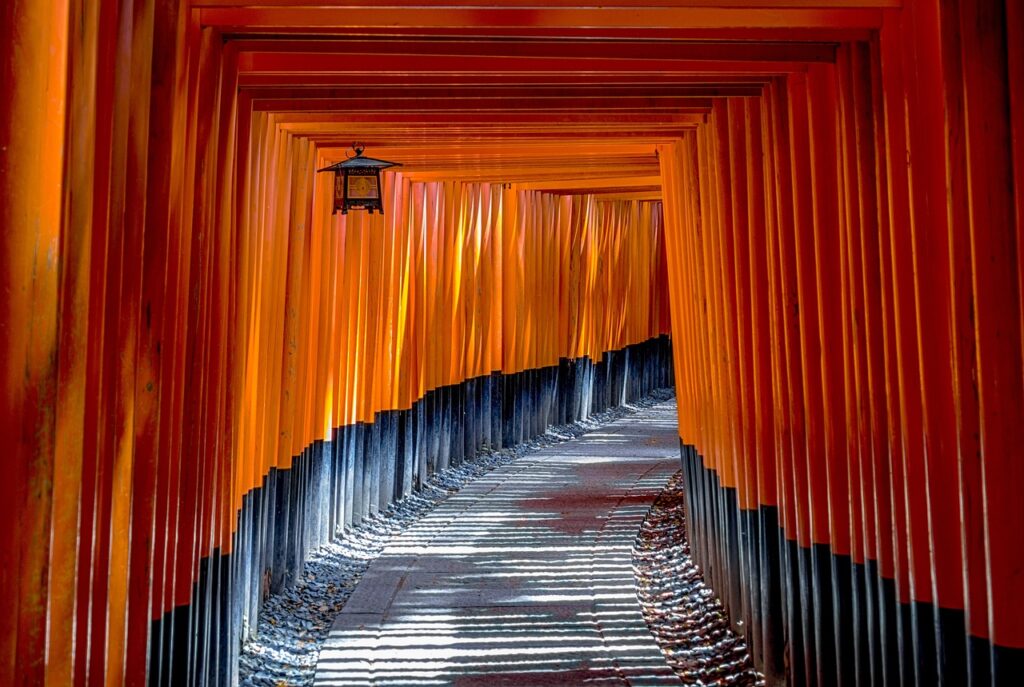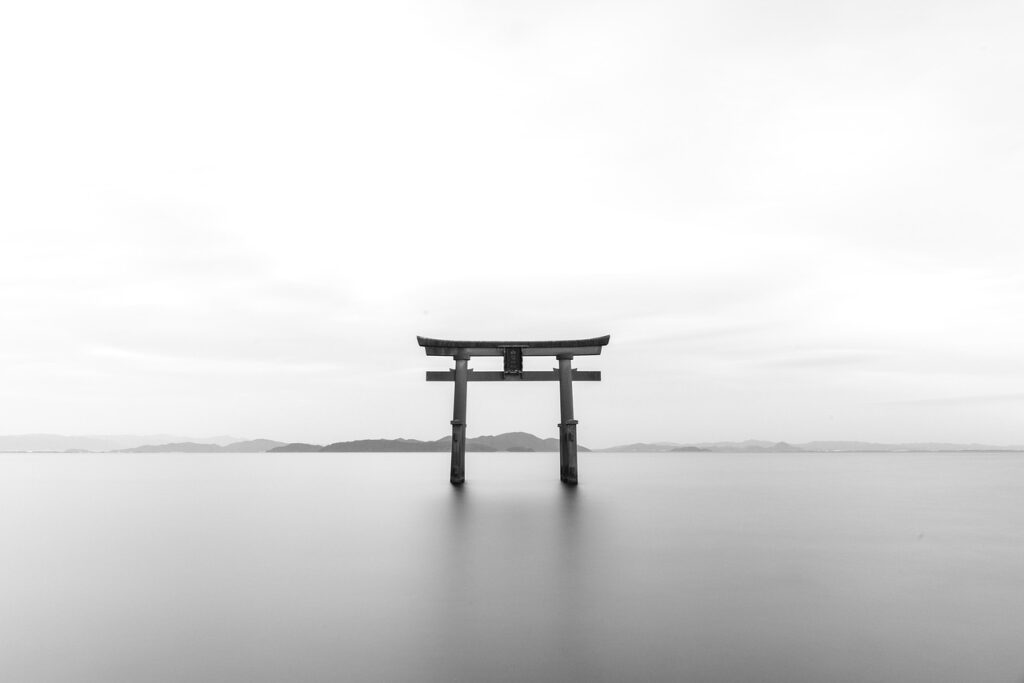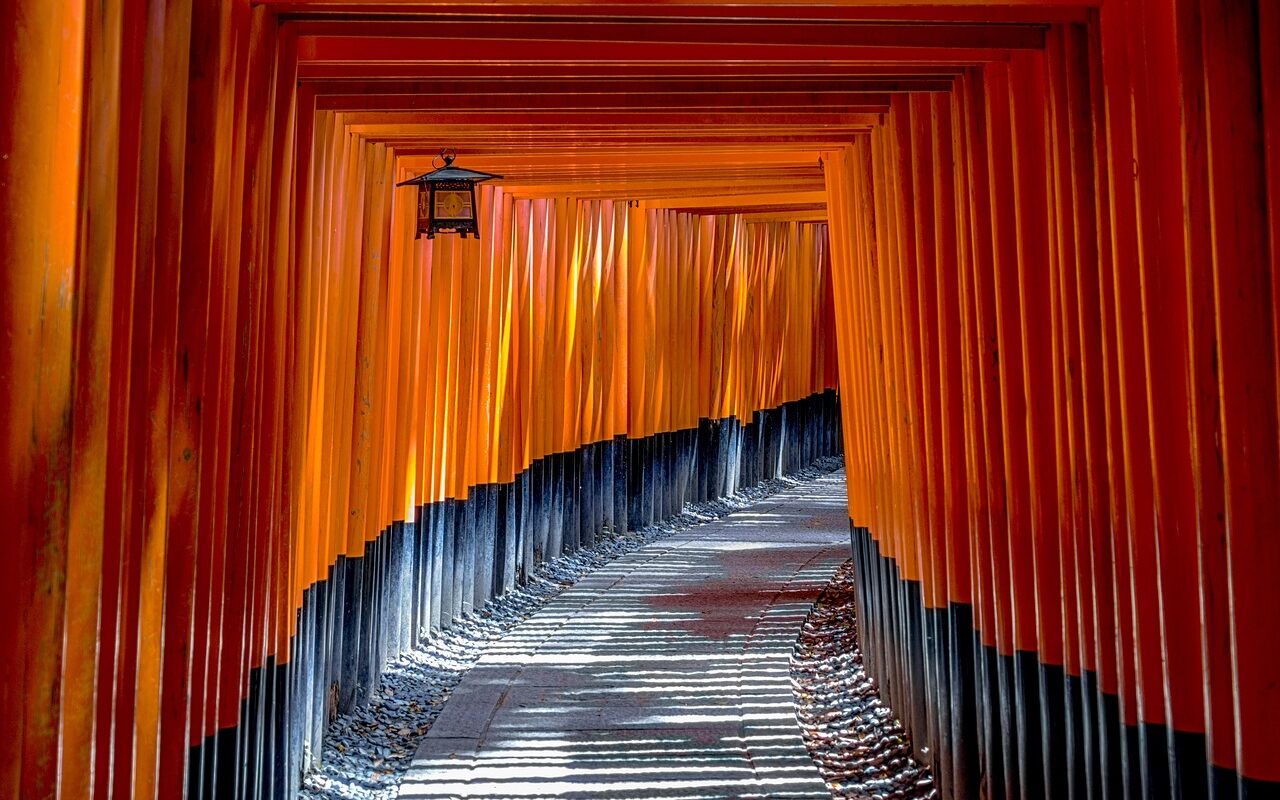Chapter 1: Introduction to the shrine
I think there are many people who don’t know about Japan’s important cultural shrines, so I would like to introduce them to you.
Shrines are like mirrors that reflect Japan’s land, nature, and people’s history and beliefs. For many Japanese people, shrines are considered special places, and they are visited for New Year’s events, special events, and even just to express one’s daily concerns or to convey one’s feelings of gratitude.
There are many shrines scattered throughout Japan, and each shrine enshrines a different deity based on its region, history, and legend. For example, Fushimi Inari Taisha Shrine in Kyoto is a place visited by people wishing for business prosperity and a good harvest, while Izumo Taisha Shrine in Tottori Prefecture is known as the god of matchmaking and is visited by many couples and lovers.
The origin of the shrine is very old, and is said to date back to the Jomon and Yayoi periods. Ancient people worshiped gods who lived in nature and relied on their power to live their lives. As a result, a belief in worshiping natural objects such as mountains, rivers, and the sea as gods took root, and shrines began to be built in those places.
There are also gates called torii gates inside the shrine. By passing through a torii gate, we become aware that we are entering a sacred realm and can have respect for God. This torii gate is familiar to many people as a symbol of the shrine.
Additionally, within the grounds of the shrine are buildings such as the main hall, worship hall, and shrine office. The main shrine is considered the place where the gods are enshrined and is the most sacred place. The worship hall is used as a place for worshipers to place their hands on the gods, and the shrine office is where the Shinto priests conduct their business.
Many seasonal festivals and events are held at shrines, and various rituals and rituals are held depending on the season. For example, in the New Year there is an event called hatsumode, where many people visit shrines to convey their wishes for the year to the gods.
In this way, shrines have been loved by many people as centers of Japanese culture, history, and faith. Shrines are deeply rooted in the hearts of Japanese people, and by learning about their beauty, sacredness, and historical background, you will be able to develop a deeper understanding and attachment to them.

Chapter 2: Historical and cultural background
We will tell you how shrines have developed in Japan until now, including history and culture.
The origins of shrines are said to date back to the Jomon period, when the Japanese archipelago still lived in a primitive manner. People at this time lived in harmony with nature, respecting the power of nature such as mountains, oceans, rivers, and trees, and sensing the presence of gods within them. Therefore, people began to create places to worship their gods in specific places, and this is thought to be the beginning of shrines.
Eventually, during the Yayoi period, rice cultivation was introduced and the lifestyle changed significantly. Natural conditions such as rain and sunlight are important for successful rice cultivation, and the blessings of the gods are now sought after. As a result, rituals and festivals were held to pray for a rich harvest, and the role of shrines also grew.
In the Heian period, the capital as the center of the nation moved to Kyoto, and Shinto and Buddhism began to be deeply intertwined. During this period, Shikinen Sengu and large festivals were held to pray for the peace and prosperity of the nation, and the importance of shrines increased even further.
In the Middle Ages, the power of the samurai increased, and local powerful clans and samurai began to build shrines within their territories. This was used to pray for the safety and prosperity of the territory, and was also used as a means to demonstrate one’s power.
In the Edo period, commoners and city merchants also began building shrines, and shrines came to play a central role in daily life. Shrines in this era were used as places to fulfill people’s daily worries and wishes, such as prosperity in business, safety for the family, and marriage.
Since the Meiji period, policies have been promoted in the form of National Shinto to make shrines the center of national ideology. As a result, shrines began to serve not only as the center of local communities, but also as symbols of the nation.
Even in modern times, shrines remain the center of Japanese life and culture. Many people visit for events such as the New Year, Shichi-Go-San, and weddings, and it also serves as a tourist destination.
In this way, shrines have undergone various changes in Japanese history and culture, but their core values and beliefs remain unchanged and are deeply rooted in the hearts of the Japanese people. Shrines will continue to enrich our lives as an important part of Japanese culture.

Chapter 3: Shrines in modern times
Let me introduce you to what shrines are like in modern Japan.
In modern Japan, shrines exist everywhere from urban areas to rural areas, and are a part of ancient traditions and modern life. Even in today’s world, where technology and information have advanced dramatically, shrines remain deeply connected to people’s daily lives and have a strong presence as special places.
Many people visit the shrine on New Year’s Day to pray for business prosperity, family peace, and health. Especially on New Year’s Day, many families and young people visit shrines to start the new year. Shrines are also often chosen as the location for important life milestones such as Shichi-Go-San events and weddings.
However, modern shrines are not just places for festivals and events. Many people enjoy it as a place of spiritual comfort and relaxation in their daily lives. Shrines tucked away in the middle of buildings in urban areas or in corners of parks are quiet places away from the hustle and bustle of the city, and are a place of peace for many people. The grounds of the shrine are filled with buildings that evoke the natural beauty and history of each season, and have a charm that makes visitors forget about time.
Modern shrines also serve as the center of local communities. Local festivals and events are often held at shrines, and they also serve as an opportunity to strengthen bonds between local residents. In particular, local shrines play an important role in passing on local culture and history to the next generation by continuing to preserve traditional festivals and events.
Furthermore, the shrine is also a very popular tourist destination. It is not uncommon to see tourists from Japan and abroad visiting historically famous shrines such as Fushimi Inari Taisha in the ancient capital of Kyoto and Kasuga Taisha in Nara. Shrines such as these are loved by many people as places where they can experience Japanese tradition and culture.
In this way, shrines play a wide variety of roles even in modern Japan, and their presence still strongly reflects Japanese culture and history. Shrines will continue to be an essential part of Japanese life, serving as places of peace in daily life and as hubs for local communities and culture.
Chapter 4: Famous works featuring shrines
We will introduce some famous works that feature shrines.
Shrines have been featured in numerous works due to their historical and cultural background. The charm and mysticism of shrines have been depicted in a variety of media, including movies, anime, novels, manga, and games.
First, in the world of movies, there is a memorable scene in director Akira Kurosawa’s “Dreams” where he visits an old shrine in the middle of a heavy rain. This work is a collection of short stories themed around people’s dreams, and shrines appear as a stage in dreams. The sight of people visiting shrines during heavy rain symbolizes the sacredness of shrines and the faith of the people.
If you look at the world of anime and manga, there are many stories that use shrines as a background, such as Higurashi no Naku Koro ni'' andKamisama Hajimemashita.” In these works, shrines are often depicted as sources of mystical power or key points in the story. In particular, Higurashi no Naku Koro ni depicts festivals and rituals held at shrines as important elements of the story.
In addition, there are novels that feature shrines as the setting or the key to the story, such as Miyuki Miyabe’s Imitator'' and Haruki Murakami's1Q84.” In these novels, shrines are depicted as places that symbolize mysterious events and people’s destinies.
Even in the world of games, shrines are featured in many works. Especially in games with traditional Japanese backgrounds, such as The Legend of Zelda and Touhou Project, shrines play an important role. In these games, players are required to visit shrines, solve puzzles at shrines, and engage in battles.
In this way, shrines have been featured in many works as places that reflect Japanese tradition and culture. Its historical background and mysterious atmosphere are loved by many creators as the setting and key points of various stories. The unique charm of shrines will continue to be depicted in many works.
Chapter 5: Summary
This is a summary about shrines.
Shrines are deeply rooted in Japanese culture and history. Throughout its long history, shrines have existed as irreplaceable places in people’s lives and hearts. Shrines can be said to have such charm and significance.
Shrines that we see on a daily basis not only add color to the landscape of local communities and cities, but also function as places of worship for many people. This is because it has long been a popular place for many people to worship the gods and express their gratitude.
The existence of shrines has also played a very important role in Japanese history and culture. Ancient festivals and rituals not only strengthen ties within local communities, but also play an important role in passing on history and traditions to the next generation.
Even in modern times, shrines remain important places in people’s hearts. In this new era, the role and significance of shrines is being reevaluated, and various activities and events are being held. In this context, if each of us maintains a sense of gratitude and respect for shrines, this will lead to increasing the value and significance of shrines.
Furthermore, the shrine is featured in many works, and its charm and mystery are conveyed to many people. With shrines being featured as a theme in various media such as movies, anime, and novels, it can be said that the position of shrines in our lives and culture has become even more important.
Finally, shrines will continue to play an important role in our lives, maintaining their presence in Japanese culture and history. With their mysterious charm and deep history, we can find peace of mind and healing by visiting shrines. It is hoped that each of us will not forget our gratitude and respect for shrines and continue to cherish them.
